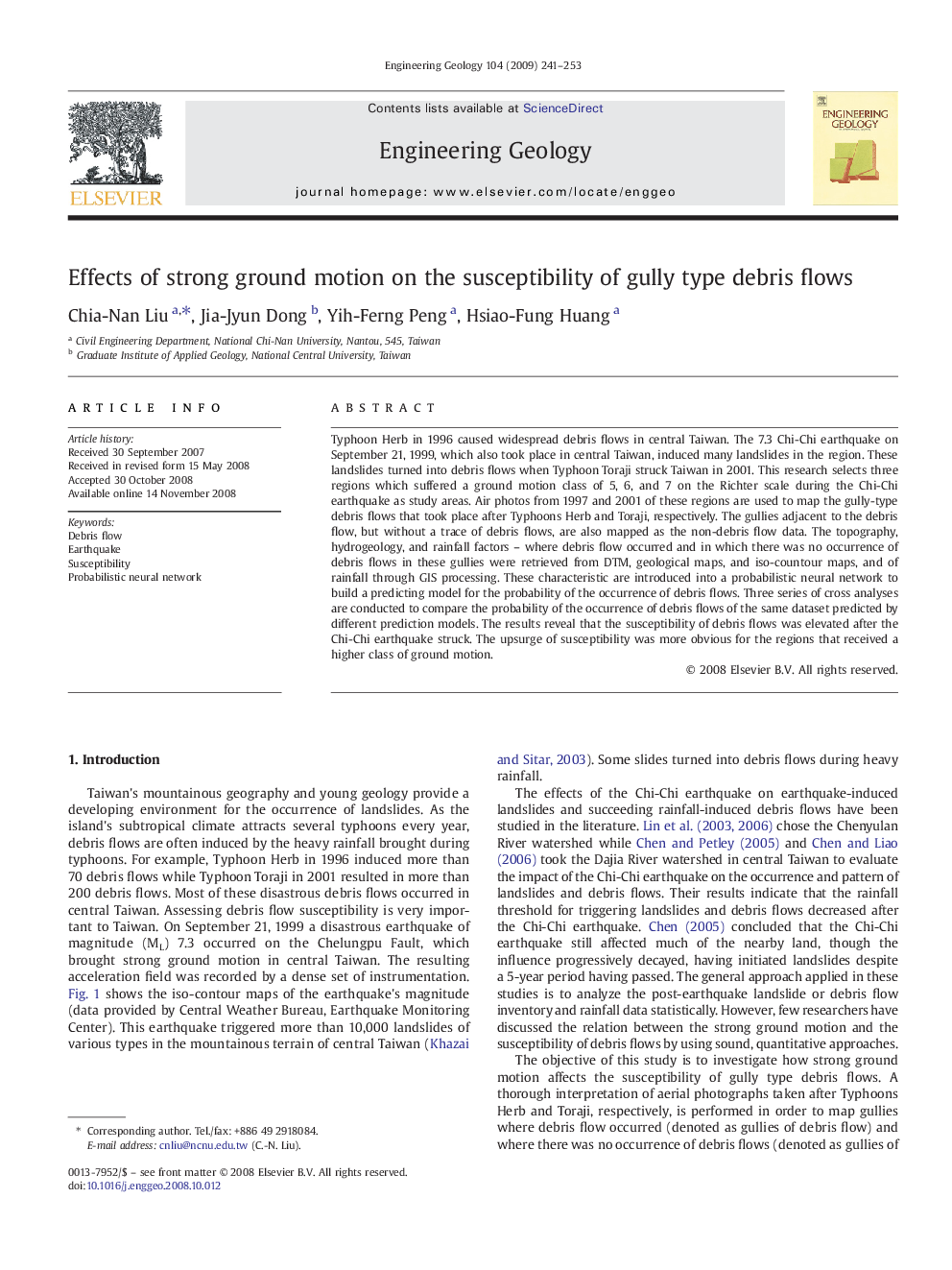| Article ID | Journal | Published Year | Pages | File Type |
|---|---|---|---|---|
| 4744423 | Engineering Geology | 2009 | 13 Pages |
Typhoon Herb in 1996 caused widespread debris flows in central Taiwan. The 7.3 Chi-Chi earthquake on September 21, 1999, which also took place in central Taiwan, induced many landslides in the region. These landslides turned into debris flows when Typhoon Toraji struck Taiwan in 2001. This research selects three regions which suffered a ground motion class of 5, 6, and 7 on the Richter scale during the Chi-Chi earthquake as study areas. Air photos from 1997 and 2001 of these regions are used to map the gully-type debris flows that took place after Typhoons Herb and Toraji, respectively. The gullies adjacent to the debris flow, but without a trace of debris flows, are also mapped as the non-debris flow data. The topography, hydrogeology, and rainfall factors – where debris flow occurred and in which there was no occurrence of debris flows in these gullies were retrieved from DTM, geological maps, and iso-countour maps, and of rainfall through GIS processing. These characteristic are introduced into a probabilistic neural network to build a predicting model for the probability of the occurrence of debris flows. Three series of cross analyses are conducted to compare the probability of the occurrence of debris flows of the same dataset predicted by different prediction models. The results reveal that the susceptibility of debris flows was elevated after the Chi-Chi earthquake struck. The upsurge of susceptibility was more obvious for the regions that received a higher class of ground motion.
